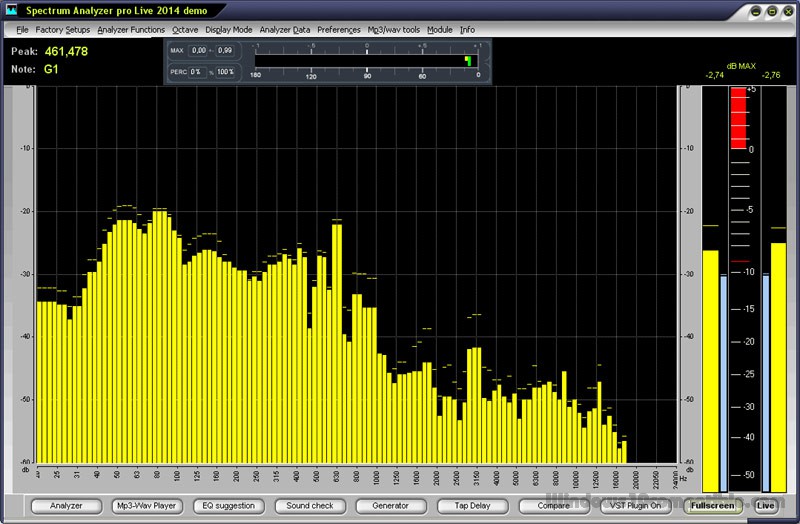

- SOUNDMAGIC SPECTRAL WINDOWS UPDATE
- SOUNDMAGIC SPECTRAL WINDOWS PLUS
- SOUNDMAGIC SPECTRAL WINDOWS PROFESSIONAL
Adjusting this control allows the most appropriate range of frequencies to be enhanced by the processing. Looking at the Big Bottom section in a little more detail, the Tune control is only marked Min and Max (like all of the controls), but actually adjusts the low‑pass turnover between 50Hz and 190Hz, with 110Hz being at the 12 o'clock centre position. The Big Bottom section of each channel has controls for Tune, Drive (with adjacent LED) and Mix, while the Exciter section has controls labelled Tune, Harmonics and Mix.
SOUNDMAGIC SPECTRAL WINDOWS PLUS
The silver front panel is clearly divided into two channels, each with two sets of three silver control knobs, plus illuminated Process In/Out buttons and a Power switch on the left‑hand side. Electronically balanced XLRs and paralleled TRS quarter‑inch sockets are provided, and a slide switch associated with each channel configures its operating level between ‑10dBV and +4dBu. The rear panel carries the ubiquitous IEC mains inlet with integral fuse holder and two sets of inputs and outputs for each channel. It is a relatively shallow unit measuring only 180mm front to back, and it weighs about 2.75kg. The Model 204 is an elegantly styled 1U rackmount box with integral power supply unit, and flexible I/O connections. The latest in this surprisingly long list of products is the new dual‑channel Model 204, which incorporates the most recent generation of Aural Exciter circuitry as well as a new version of the bass enhancer, the Optical Big Bottom. (For more details on these processes, see ' The Aphex Technology' box.) The Big Bottom can be thought of as a low‑frequency version of the Aural Exciter which is designed to enhance the bass frequencies in much the same way as the original Exciter enhanced the upper harmonics. Of more interest in the context of this review, the C2 also included the Big Bottom circuit for the first time.
SOUNDMAGIC SPECTRAL WINDOWS PROFESSIONAL
The Exciter circuitry has been continually developed and improved over the years with the low‑cost Type C launched in 1985, the professional Type 3 in 1989, and the Type C2 in 1992 - this last revision being quieter, more musical and easier to set up than previous low‑cost versions. Two years later a simplified and cheaper version was developed - the Type B - to broaden the system's appeal to DJs, musicians and the smaller PA companies where budgets were too small to afford the Type 2. The first generation Exciter could not be purchased, only hired, and it wasn't until the release of the Type 2 Exciter in 1981 that studios were able to purchase the system. It seems hard to believe, but the Aphex Aural Exciter has been around for over a quarter of a century! First introduced in 1975, it has become a very common tool in the professional and home studio alike.
SOUNDMAGIC SPECTRAL WINDOWS UPDATE
Aphex update their famous Aural Exciter and Big Bottom processes for the 21st century.


 0 kommentar(er)
0 kommentar(er)
